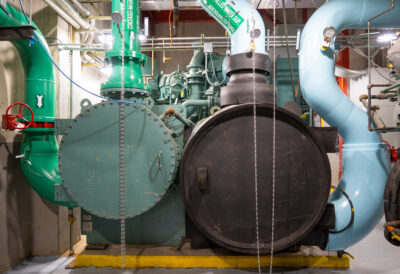
In the fight against climate change, individual action is important, but upgrading infrastructure makes a much larger impact. This spring, FIT installed a new energy-efficient air-cooling system that will make maintaining a comfortable indoor climate significantly less energy-intensive. This chiller plant will reduce energy costs by more than $1 million per year and reduce annual emissions by almost 1,000 metric tons—equivalent to the electricity consumption of 3,000 households.
The old chiller was powered by steam created using fossil fuels. The new chiller is powered by electricity. Currently, New York City’s electricity is mostly derived from fossil fuels, but more renewable electricity is coming. For example, in 2026, New York City will receive a transmission line from Canada containing 100 percent renewable power.
FIT’s goal, ultimately, is to reach zero emissions by 2050, in line with New York City’s Local Law 97, passed in 2019.

FIT purchased the $7 million chiller plant with funding from the New York City Department of Citywide Administrative Services (DCAS), which has provided more than $50 million in grants to help the college purchase numerous energy-efficient infrastructure upgrades since 2005.
One reason for purchasing the new chiller plant was to cool FIT’s new academic building, opening this summer on 28th Street. The energy-efficient machinery will help the building attain LEED certification, which recognizes sustainable design, construction, and operation.
“We wanted to make the new building more energy efficient,” says Albert Palmaccio, assistant director of engineering and sustainability for UG2, which manages FIT’s operations, “but also to make the entire campus less carbon-generating and also more efficient.”
